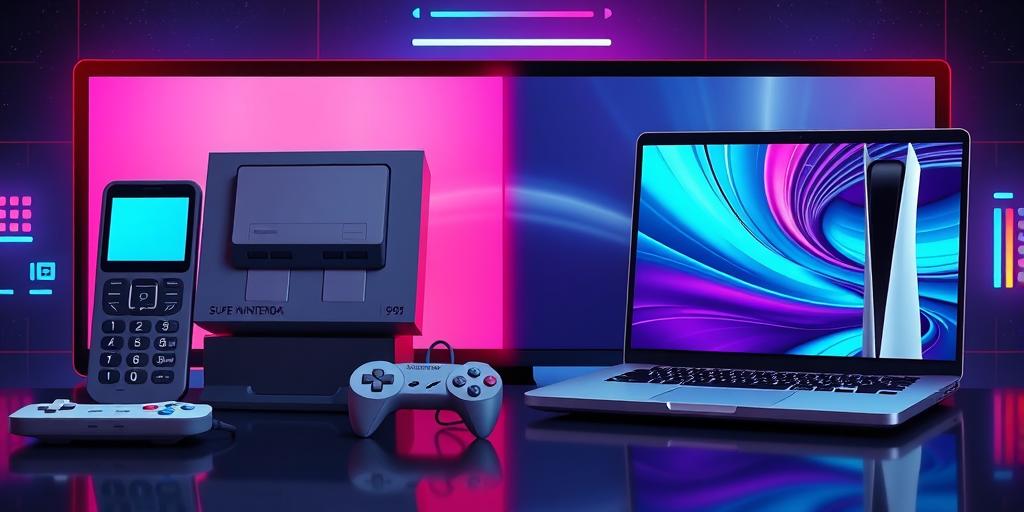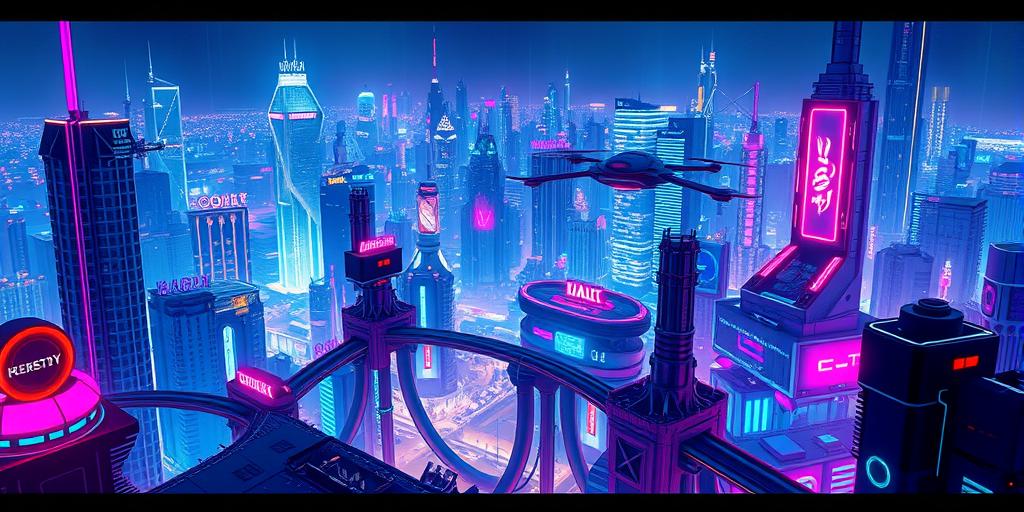Gadgets We Loved in the 90s and Their Modern Counterparts
Do you remember the thrill of receiving the latest gadget as a kid in the 90s? The bulky cell phones, the pixelated screens, the dial-up modem’s screech – these weren’t just devices; they were portals to a new world, symbols of a technological revolution. Let’s take a nostalgic trip back to the 90s and explore some iconic gadgets and their modern equivalents, from the chunky cell phones to the revolutionary game consoles. Prepare to be amazed by how far we’ve come!
From Brick Phones to Smartphones: A Cellular Revolution
Remember the excitement of owning a cell phone in the 90s? These weren’t sleek smartphones; they were bricks! Models like the Motorola DynaTAC 8000x or the Nokia 3310 were symbols of status and a connection to the world beyond. Their functionalities were limited to basic calls and texts, a far cry from the smartphones we know today. Yet, the sheer novelty of mobile communication made them revolutionary. Today, we are used to smartphones that are not only pocket-sized but also feature advanced cameras, high-speed internet access, and a multitude of apps. The evolution from those weighty predecessors to devices such as the iPhone or Samsung Galaxy S series is nothing short of remarkable. We’ve moved from simple communication tools to handheld computers with almost limitless potential, an evolution that dramatically changed our lives. This leap demonstrates the remarkable rate at which technological advancements have transformed personal communication. These changes impact everything from how we socialize to how we work and access information. We no longer just make phone calls, we stream movies, participate in virtual meetings, and control our homes, all within these tiny, pocket-sized computers.
The Evolution of Mobile Technology: A Comparison
Consider the comparison of a 90’s Nokia 3310, with its limited text messaging and monochrome display, against the capabilities of a modern iPhone 14. We have moved from a simple communication tool to a powerful multimedia device that can be used for various functions, including communication, entertainment, and productivity. The advancement in mobile technology is evident in the improved battery life, better camera quality, and the inclusion of features such as GPS, facial recognition, and various sensors that allow for an enhanced user experience. This evolution illustrates how technological advances have transformed personal communication.
Gaming Consoles: From Pixels to Photorealism
The 90s witnessed the rise of iconic gaming consoles such as the Super Nintendo Entertainment System (SNES) and the Sega Genesis. These systems, with their 2D graphics and relatively simple gameplay, gave birth to a generation of gamers. Games like Super Mario World and Sonic the Hedgehog were not just games, but cultural touchstones. The progression to the current generation of consoles, like the PlayStation 5 and Xbox Series X, is astonishing. The technology has advanced from 2D graphics to incredibly realistic 3D environments. Think about the difference between the pixelated sprites of 90s games and the photorealistic visuals of modern titles. This leap highlights the advancements in graphic capabilities, processing power, and immersive storytelling.
The Transformation of Interactive Entertainment
Beyond graphics, modern consoles offer online multiplayer gaming, virtual reality (VR) integration, and enhanced controllers that provide more immersive gameplay experiences. Think about the difference between using a basic SNES controller compared to the sophisticated haptic feedback and adaptive triggers of a PS5 DualSense. These features provide players with a far more engaging and immersive experience. The gaming landscape has shifted from localized single-player experiences to interactive global communities. Gamers can now connect with friends and rivals from around the world. The difference is not just in the technology, but in the social aspect of gaming that has grown exponentially.
Personal Computers: From DOS to Cloud Computing
The personal computers of the 90s were behemoths compared to today’s sleek laptops. The clunky desktop towers, the slow dial-up internet connection, and the DOS operating system, though revolutionary at the time, seem almost ancient now. However, they opened up a new world of possibilities. From word processing to simple games, these early PCs were vital tools that laid the groundwork for the ubiquitous computing we have today. Today’s ultra-portable laptops offer powerful processing capabilities, seamless cloud connectivity, and intuitive operating systems. The advancements in processing power, storage capacity, and user interface design have transformed the way we interact with technology.
The Advent of Modern Computing
Modern computers are more portable, more powerful, and more connected than ever before. We use them for everything from work and communication to entertainment and education. Cloud computing has fundamentally altered how we store and access data, freeing us from physical storage limitations. The evolution from the large, bulky desktop systems to today’s powerful and compact devices reflects the incredible strides in miniaturization and efficiency. We’ve moved from a world where computers were specialized tools to one where they are seamlessly woven into the fabric of our lives.
From VHS to Streaming: Entertainment Evolution
Remember the ritual of going to the video store, browsing through rows of VHS tapes, and choosing a movie for the night? This experience has been largely replaced by streaming services such as Netflix, Hulu, and Disney+. This transition exemplifies how technology has changed our entertainment choices and habits. Streaming services offer on-demand access to countless movies, TV shows, and other forms of digital content. It is clear how we have moved from a limited selection and physical media to a vast library of entertainment available at our fingertips.
The Rise of On-Demand Entertainment
This shift to on-demand entertainment is a prime example of technology’s impact on how we consume media. Streaming allows us to watch what we want, when we want, and on almost any device. This level of convenience was simply unimaginable in the 90s. It’s not just about what we watch; it’s also about how we access it and the seamless integration with our digital lives. The convenience, selection, and accessibility of streaming services are undeniable advantages over the limitations of physical media.
The journey from the bulky gadgets of the 90s to the sleek, powerful devices of today is a testament to human innovation. Each advancement has made our lives easier, more connected, and undeniably more entertaining. What’s your favorite 90s gadget? Share your memories in the comments below!













